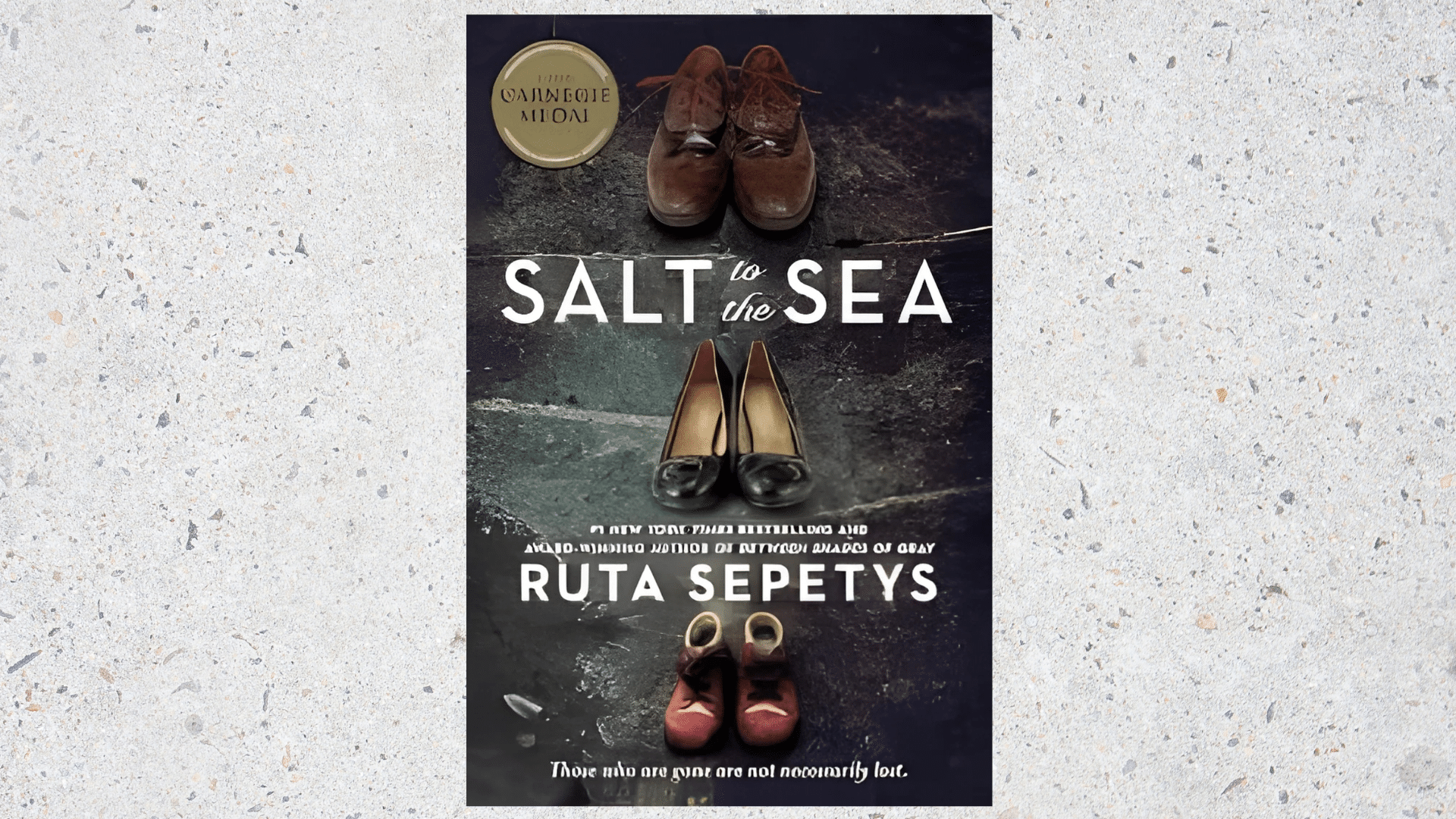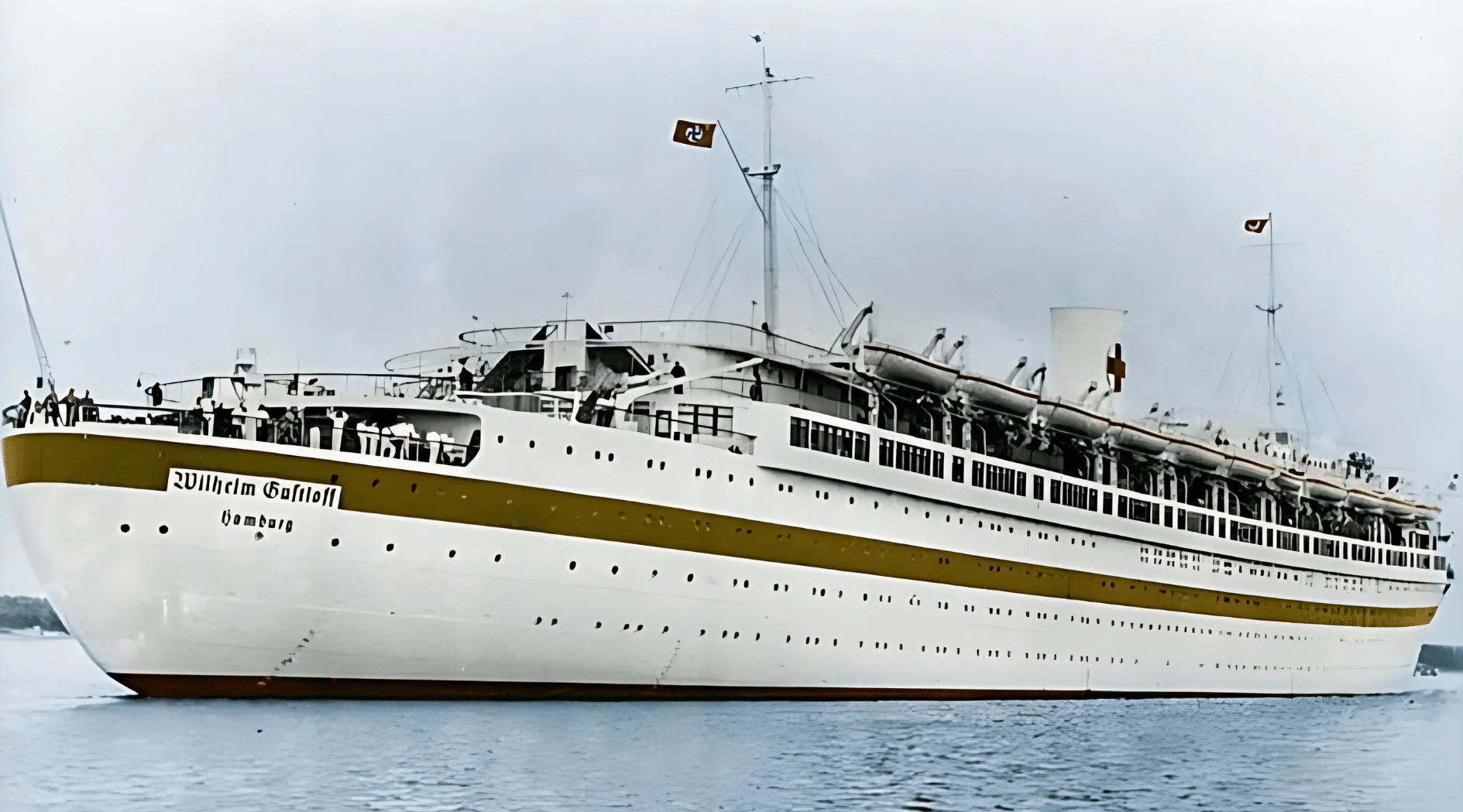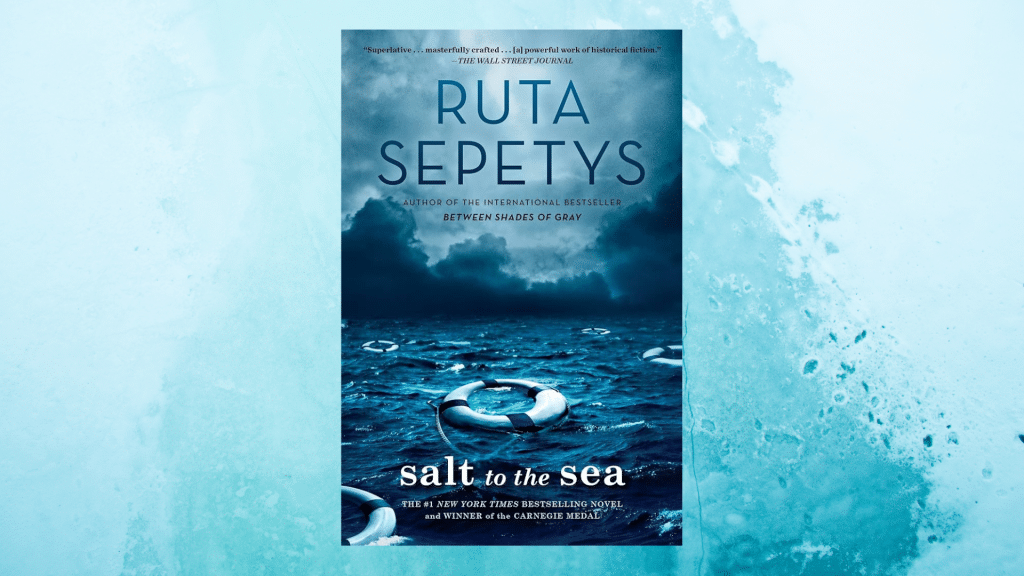When I first picked up Salt to the Sea by Ruta Sepetys, I didn’t realize how deeply it would stay with me.
The novel tells the story of refugees during World War II, all hoping to find safety but carrying secrets, guilt, and heavy fears. Their voices, Joana, Emilia, Florian, and Alfred, each reveal a different side of survival and humanity.
What makes the book powerful is how it blends history with personal stories, reminding us of real lives behind forgotten tragedies.
I think this book is important because it gives a voice to people who were almost erased from memory.
In this post, I’ll share a summary, key themes, and why this novel matters for readers today.
Plot Summary
The novel opens in January 1945, during the last months of World War II. Refugees from Eastern Europe are trying to escape the Soviet army.
Among them are Joana, a Lithuanian nurse, Emilia, a pregnant Polish teenager, and Florian, a Prussian boy hiding a secret.
As they move through the frozen countryside, they meet the Shoe Poet, an old man, and a young boy known as the Wandering Boy. Their journey is marked by danger, hunger, and fear, but they continue forward.
Their path leads to the Wilhelm Gustloff, a German ship carrying thousands of refugees across the Baltic Sea. Alfred, a young Nazi soldier already aboard, imagines himself as a hero. Joana, Emilia, and Florian see the ship as their chance at safety.
Soon after departure, the ship is hit by Soviet torpedoes. With more than 10,000 people aboard, panic spreads as many drown in the freezing waters. Emilia and Alfred die, while Joana, Florian, and the wandering boy survive.
The novel closes by noting that over 9,000 lives were lost in the sinking of the Wilhelm Gustloff, a maritime disaster greater than the Titanic but rarely remembered.
Salt to the Sea: Chapter-by-Chapter Breakdown

The novel is written in short chapters, switching between four main voices: Joana, Emilia, Florian, and Alfred. Each section brings them closer to the Wilhelm Gustloff and the tragedy that awaits.
Chapters 1–10: The Escape Begins
The story begins in East Prussia in January 1945. Joana leads a small group of refugees through snow and forests, relying on her medical skills to keep them alive. She hides her own guilt while taking care of strangers.
Florian travels alone, carrying stolen art from the Nazis and nursing his wounds. He avoids people, fearing betrayal. His path changes when he rescues Emilia, a Polish teenager about to be attacked by a Russian soldier.
Chapters 11–20: Strangers Join Forces
Joana’s group grows larger as Florian reluctantly joins them. Though he wants to remain distant, his injuries force him to accept help. He keeps his stolen secret hidden, planning his next move carefully.
Emilia struggles to keep her pregnancy a secret. The fear of being found weighs heavily on her, adding another layer of tension to the journey.
Along the way, the group is joined by the Shoe Poet, an old man with wisdom, and a wandering boy who has lost his family. Their presence brings kindness and humanity to the group.
As bombs fall and hunger gnaws at them, the group faces greater danger. The shifting perspectives show how each character views survival differently, but together they keep moving toward the promise of safety.
Chapters 21–30: Secrets and Bonds
Joana emerges as the quiet leader of the group. She saves lives with her medical knowledge, even as the horrors of war surround them. Her strength earns the trust of those traveling with her.
Emilia begins to share fragments of her past. Her loneliness and the violence she endured are revealed, giving more weight to her struggles.
Florian reflects on his stolen art and questions whether his mission is worth the risk. His guilt begins to surface, showing the complexity of his character.
Alfred continues to imagine grand achievements through his false letters. His delusions create a sharp contrast with the suffering of the refugees, exposing the dark mindset of blind loyalty to the Nazis.
By the end of this section, the group reaches the port city of Gotenhafen, where thousands of desperate people wait to escape on ships.
Chapters 31–40: Boarding the Wilhelm Gustloff
The refugees finally board the Wilhelm Gustloff, a ship meant for soldiers and medical staff but overcrowded with civilians. Relief quickly turns to unease as they see the number of people crammed onto the vessel.
Alfred, already on the ship, notices Joana and imagines ways to impress her. His twisted thoughts show how little he understands of true courage.
Joana continues caring for the sick, treating passengers despite her own exhaustion. Florian stays alert, protecting his secret and watching over Emilia.
Emilia grows weaker as her pregnancy reaches its final stage. Her vulnerability becomes more obvious, heightening the tension.
This section marks a turning point, as the characters shift from running on land to facing danger at sea.
Chapters 41–50: Storm of Secrets
Emilia gives birth on the ship with Joana’s help. The baby’s arrival brings both joy and fear, as survival now means protecting another fragile life.
Florian’s mission begins to unravel as others sense he is hiding something. Still, he stays committed to protecting Joana and the group. His inner conflict grows deeper.
Alfred’s fantasies intensify, and he begins to act recklessly. He represents the danger of blind pride in a time when others are simply trying to live.
Rumors spread that Soviet submarines are nearby. Passengers whisper about the threat, but many cling to the hope that the ship will reach safety.
Each character reflects on their past choices and the price of survival, showing how secrets weigh heavily even in moments of brief calm.
Chapters 51–End: The Sinking
The Wilhelm Gustloff is struck by Soviet torpedoes, and panic sweeps through the ship. Families are torn apart as people fight for space in lifeboats.
Emilia dies while protecting her newborn child, her story ending with a sacrifice. Alfred also perishes, trapped in the lies and cowardice that defined him.
Joana and Florian manage to survive, pulling the wandering boy to safety. Their survival is not a victory but a haunting reminder of the cost of war.
More than 9,000 people died in the sinking, making it one of the worst maritime disasters in history. The novel closes with the reminder that this tragedy, larger than the Titanic, is rarely remembered.
Salt to the Sea: Character Analysis
The story is told through four main characters, along with a supporting cast. Each one shows a different side of survival during war.
1. Joana: Guilt, Healer, Survival
- A Lithuanian nurse leading a group of refugees.
- Skilled in medicine and often puts others first.
- Struggles with guilt over choices made earlier in the war.
- Represents survival through care and responsibility.
2. Emilia: Innocence, Trauma, Motherhood
- A Polish teenager traveling while hiding her pregnancy.
- Haunted by violence and loss from her past.
- Finds some safety with Florian but remains at risk.
- Gives birth on the ship and dies protecting her baby.
3. Florian: Revenge and Redemption
- A Prussian boy carrying stolen Nazi art.
- Driven by anger at betrayal and a need for revenge.
- Keeps others at a distance but slowly connects with Joana and Emilia.
- Survives and shifts toward redemption, valuing loyalty and trust.
4. Alfred: Delusion and Nazi Mindset
- A young Nazi sailor aboard the Wilhelm Gustloff.
- Writes imagined letters in his head, painting himself as a hero.
- Selfish, cowardly, and detached from reality.
- Represents blind loyalty to Nazi ideology and dies in the sinking.
5. Supporting Cast: Humanity in Crisis
- The Shoe Poet: An old man whose wisdom and focus on shoes reflect dignity in hardship.
- The Wandering Boy: Alone after losing his family, he survives with Joana and Florian, symbolizing hope.
- Heinz and others: Show the variety of lives caught in the tragedy, adding depth to the refugee experience.
Themes and Symbols in Salt to the Sea
The novel covers several themes and symbols that highlight the human cost of war and the struggle to survive.
- Survival and Sacrifice: The novel shows that survival comes with sacrifice. Every character struggles to live. Emilia gives her life for her baby, and the sinking proves survival is never certain.
- Secrets and Guilt: Joana’s guilt, Florian’s hidden mission, and Emilia’s concealed pregnancy show how secrets shape choices and reveal the heavy burden of guilt in wartime.
- Courage in Crisis: Courage appears in small acts, such as Joana’s medical care, Florian risking himself for others, and Emilia giving birth during chaos, all showing strength in crisis.
- Humanity in Wartime: The Shoe Poet’s wisdom, the wandering boy’s innocence, and moments of compassion highlight how kindness and hope endure even in war.
- Symbolism of the Sea, Shoes, and Letters: The sea reflects both escape and death, shoes symbolize dignity and survival, and Alfred’s imagined letters reveal delusion and self-deception.
Historical Context

The Wilhelm Gustloff was a German ship used to evacuate refugees and soldiers in 1945. It was struck by Soviet torpedoes in the Baltic Sea, killing over 9,000 people, making it the deadliest maritime disaster in history.
Families fleeing war, children, and the wounded were among the victims, turning the voyage into a heartbreaking loss.
Ruta Sepetys wrote Salt to the Sea to give voice to this forgotten tragedy. Through her characters, she highlights the stories of ordinary people whose suffering was largely left out of history books, ensuring their memories are not lost.
Reviews and Criticism for Salt to the Sea
Many readers praise the book for its use of multiple points of view. The shifting voices create a fuller picture of war and make the story more emotional. Ruta Sepetys’ writing style is often described as powerful yet easy to follow.
Some criticism focuses on pacing. The short chapters move quickly, but at times the story feels rushed. Alfred’s perspective is also seen as weaker, with some readers finding his voice unrealistic compared to the others.
Overall, readers view Salt to the Sea as emotional but accessible. It is a young adult novel that handles heavy history in a way that both teens and adults can connect with.
The book is often recommended in schools and book clubs because it opens discussion on forgotten parts of World War II. Many reviewers agree it raises awareness about a tragedy that deserves more attention.
Wrapping Up
Salt to the Sea is more than just a story about war – it is a reminder of the countless voices that were lost in history.
Through Joana, Emilia, Florian, and Alfred, readers see how ordinary people faced fear, hope, and sacrifice during one of the darkest times. The novel shows that even in war, kindness, courage, and humanity can still shine.
I believe this book is important because it brings attention to a tragedy that many people never learn about. It gives a voice to those who could not tell their own stories.
For readers today, it is not only a moving novel but also a lesson about memory, survival, and the importance of remembering the past. Pick up this book and let its voices stay with you.











